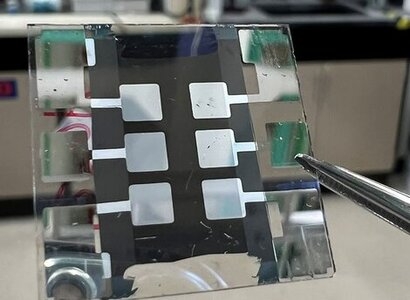
The research team worked in collaboration with scientists from the University of Toledo, the University of Colorado–Boulder, and the University of California–San Diego.
A unique architectural structure enabled the researchers to record a certified stabilised efficiency of 24 percent under 1-sun illumination, making it the highest reported of its kind. The highly efficient cell also retained 87 percent of its original efficiency after 2,400 hours of operation at 55 degrees Celsius.
The paper, “Surface Reaction for Efficient and Stable Inverted Perovskite Solar Cells,” appears in the journal Nature. The authors from NREL are Qi Jiang, Jinhui Tong, Ross Kerner, Sean Dunfield, Chuanxiao Xiao, Rebecca Scheidt, Darius Kuciauskas, Matthew Hautzinger, Robert Tirawat, Matthew Beard, Joseph Berry, Bryon Larson, and Kai Zhu.
Perovskite, which refers to a crystalline structure, has emerged in the last decade as an impressive means to efficiently capture sunlight and convert it to electricity. Research into perovskite solar cells has been focused to a large degree on how to increase their stability.
“Some people can demonstrate perovskites with high stability, but efficiency is lower” said Zhu, a senior scientist in the Chemistry and Nanoscience Centre at NREL. “You ought to have high efficiency and high stability simultaneously. That’s challenging.”
The researchers used an inverted architecture, rather than the “normal” architecture that has to date yielded the highest efficiencies. The difference between the two types is defined by how the layers are deposited on the glass substrate. The inverted perovskite architecture is known for its high stability and integration into tandem solar cells. The NREL-led team also added a new molecule, 3-(Aminomethyl) pyridine (3-APy), to the surface of the perovskite. The molecule reacted to the formamidinium within the perovskite to create an electric field on the surface of the perovskite layer.
“That suddenly gave us a huge boost of not only efficiency but also stability” Zhu added.
The scientists reported the 3-APy reactive surface engineering can improve the efficiency of an inverted cell from less than 23 percent to greater than 25 percent. They also noted the reactive surface engineering stands out as an effective approach to significantly enhance the performance of inverted cells “to new state-of-the-art levels of efficiency and operational reliability.”
Funding for the research done at NREL came from the Centre for Hybrid Organic-Inorganic Semiconductors for Energy (CHOISE), an Energy Frontier Research Centre within DOE’s Office of Basic Energy Sciences, and from the DOE’s Solar Energy Technologies Office.
NREL is the US Department of Energy's primary national laboratory for renewable energy and energy efficiency research and development. NREL is operated for the Energy Department by the Alliance for Sustainable Energy, LLC.
For additional information:

